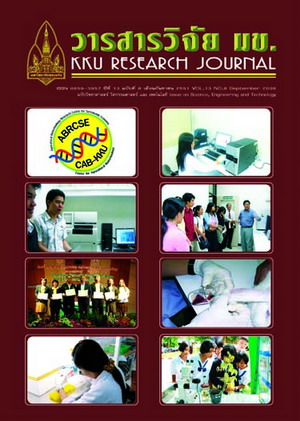Effects of ozone on the survival of Campylobacter jejuni (Thai)
Main Article Content
Abstract
Campylobacter jejuni causes human enteritis. Chemical sanitizers have been widely used to inactivate C. jejuni but this can lead to chemical contamination in food and environment. The bacteriocidal effects of ozone have been studied on some bacteria. This work studied the effects of ozone on survival of C. jejuni ATTC 29428. C. jejuni were exposed to ozone for 0.5, 1, 2, 3, 5, 7 and 9 min equivalent to ozone in water of 0.03, 0.06, 0.12, 0.18, 0.30, 0.42 and 0.54 mg/l, respectively. The survivals of C. jejuni after ozone treatment at 0.5, 1, 2, 3, 5 and 7 min were 7.5, 6.6, 3.7, 3.4, 2.9 and 2.4 log CFU/ml, respectively (initial count was 8 log CFU/ml). After 9 min of ozone exposure, C. jejuni was reduced to less than detection limit (1 log CFU/ml). The whole cell soluble proteins (31kDa-200 kDa) were denatured and not detected by gel electrophoresis. In addition, ozone treatment resulted in virulence genes cadF, cdtA, cdtB and cdtC damages as revealed by polymerase chain reaction technique. This research showed that ozone can potentially be used to inactivate C. jejuni in water.


